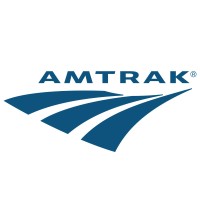
Amtrak
Moving America Where it wants to go. We are not just a railroad; we are a company that moves people. With 21,000 route miles in 46 states, the District of Columbia and three Canadian provinces, Amtrak operates more than 300 trains each day – at speeds up to 150 mph – to more than 500 destinations. We move customers where they want to go by responding to their wants and needs. And by doing so, we connect communities, economies and families that make our nation great. We employ more than 20,000 diverse, energetic professionals in a variety of career fields throughout the Unites States. Our mission is to provide safe transportation in the most efficient way possible, while ensuring that our customers get a consistent, high quality experience. Carrying out this mission, and ultimately achieving our vision, hinges on our employees. The future rides with us. Amtrak is an equal employment opportunity employer.






